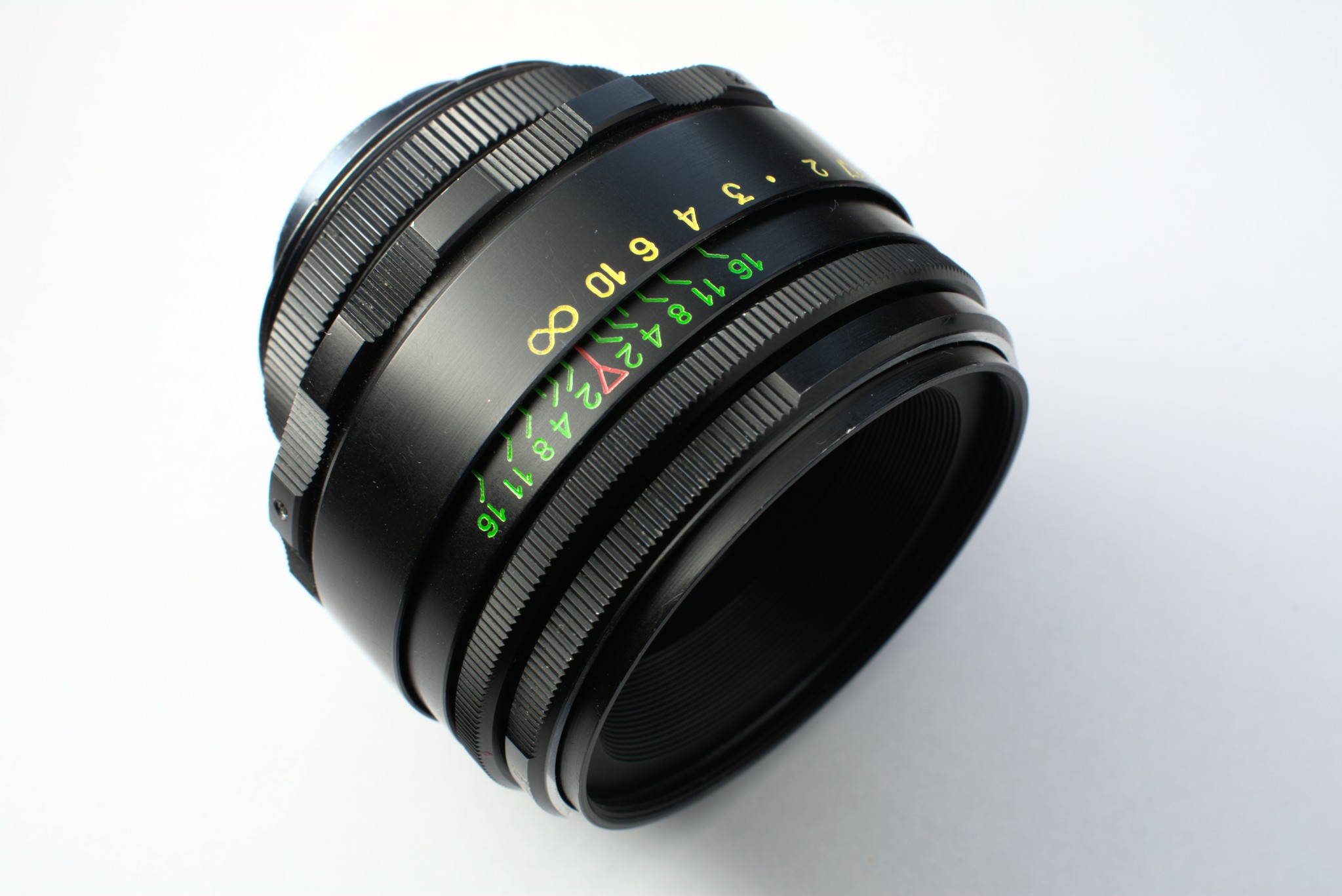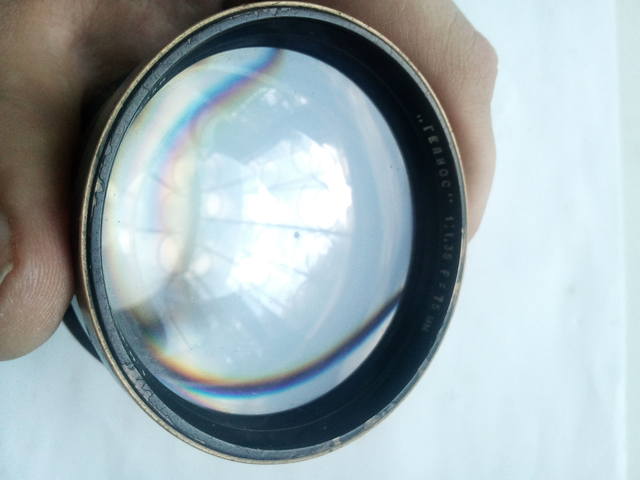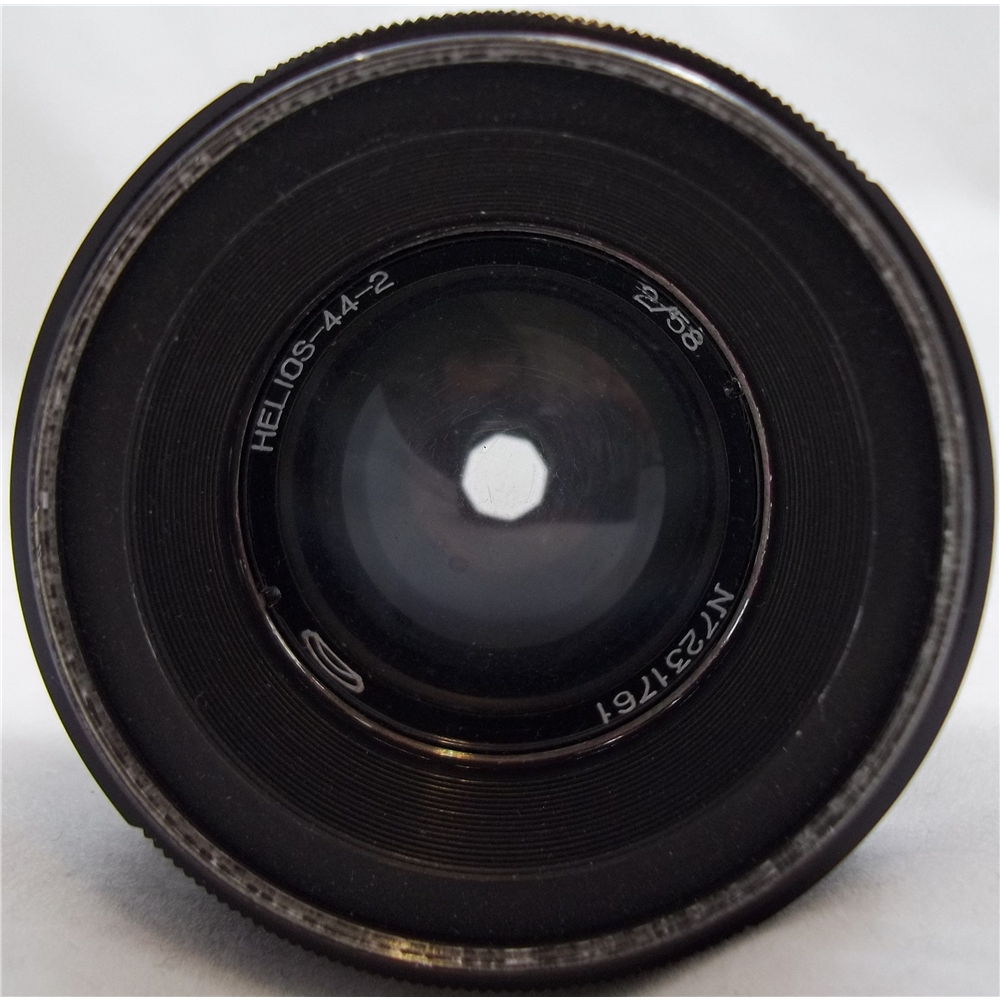

DX-code introduction (instead of manual ISO-speed switch) - Zenit-412DX.Switching to the Pentax K mount - Zenit-122K.TTL metering system (instead of a non-coupled Selenium-cell lightmeter) on the Zenit-TTL.Introduction of an automatic 'jumping' diaphragm on the Zenit-EM.The major events of the further development of Zenit-E line was: This was because almost all low-end Zenits until the recent 412DX have been based on the Zenit-E die-cast chassis, complying with the local philosophy that a crude but affordable camera was better than no camera. Towards the end of the 20th century, the Zenit-E heritage became an obstacle to the development of more modern Zenit models. Later models were only produced in the M42×1 with the Pentax K mount available for the latest models. Production included both M39×1 and M42×1 mounts for the Zenit E and Zenit B models.

Automatic diaphragm functionality was not available until the introduction of the Zenit-EM, which used a direct mechanism linking the shutter release button to the aperture mechanism, significantly increasing the effort required to release the shutter. A heavy and tough camera which gained a reputation of being ‘bomb proof’, with a mechanism that was of exceedingly simple design along the lines of "what isn't there, can't go wrong". This led to one of the most famous Zenits - Zenit-E which saw (including its subtypes) over 12 million produced. Camera production switched to the M42×1 thread (also known as Praktica thread) and an instant-return mirror was also developed. Zenit-E and its successors Zenit E with Helios 44-2 lens and selenium-cell lightmeter Zenit E with Helios 44-2 lens, made in 1971ĭuring 1967 through 1969 KMZ built an automatic die-cast moulding line, allowing mass camera production. On the Zenit-S the mirror setting lever mechanism of the original Zenit was replaced by a cord and pulley system. For an SLR, the Pentaprism of all classical Zenits was undersize, with the viewfinder showing about two-thirds of the actual frame-size. The Zenit-S had PC-synchro for external flash units (almost like the Zorki-S) and the Zenit-3M also had an RF-sibling, the Zorki-6. In transforming the Zorki into an SLR, the simplest approach was taken: the rangefinder housing was removed from the top and replaced by a plain ground-glass screen and prism a mirror was added below with a lever operated mirror setting system and the M39×1 thread mount was pushed forward to make room for the mirror inside.ĭuring the first years of production (until the Zenit-E of 1967) Zenit camera development coincided with that of the Zorki cameras. The above Zenit was based on the Zorki rangefinder camera (a copy of the Leica II). History Early years Zenit, first model, 1952 Zenit-S (Synchronized), 1955 This camera will make use of a different lens line. Zenit-Leica Collaboration Ī second digital camera of an entirely new design is planned for release by 2020 also in collaboration with Leica. Two further M-mount Zenitar lenses are set for release circa March 2019: the Zenitar-M 21mm F/2.8 and the Zenitar-M 50mm F/1.0.

Russian firmware drives the camera, and the chassis was designed in Krasnogorsk. The edition comprised 500 units: fifty units with a black finish and 450 in silver. The camera was produced in partnership with Leica, and the digital components derived to some extent from the full-frame Leica M (typ 240) series.

The digital Zenit M camera was released in a limited edition set with the Zenitar-M 35mm F/1.0 lens. The early Zorki-based models before that time were labelled "Zenith" in a handwritten style of script.ĭuring the 2018 Photokina expo, Zenit announced that it was resuming camera and lens production for the M-mount, as well as for unspecified Nikon and Canon mounts in 2019. However, TOE's imported camera bodies as from 1963 retained the "Zenit" badges.
HELIOS LENS WIKI MANUALS
The name is sometimes spelled Zenith in English, such as the manuals published by the UK Zenit-importer TOE. In the 1960s and 1970s, they were exported by Mashpriborintorg to 74 countries. Among related brands are Zorki for 35 mm rangefinder cameras, Moskva (Moscow) and Iskra for medium-format folding cameras and Horizon for panoramic cameras. The Zenit trademark is associated with 35 mm SLR cameras. Zenit ( Russian: Зени́т) is a Soviet camera brand manufactured by KMZ in the town of Krasnogorsk near Moscow since 1952 and by BelOMO in Belarus since the 1970s. ( Learn how and when to remove this template message)


 0 kommentar(er)
0 kommentar(er)
